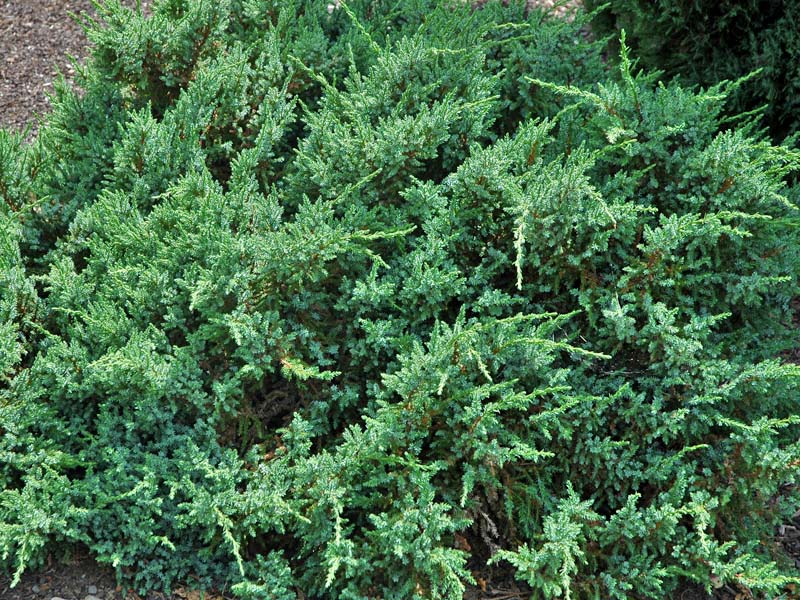
Woody > Juniperus > Juniperus pingii > Juniperus pingii
Juniperus pingii
Ping's Juniper
Origin: China.
Mike's
Opinion


"
Ping’s Juniper is on the International Union for Conservation of Nature, Red List of Threatened Species because of extensive deforestation. At full maturity it is a great specimen plant with attractive blue/grey foliage, slightly weeping branches and brown/grey, exfoliating bark. Direct contact with the foliage may cause skin irritation and rash.
Michael Pascoe, NDP., ODH., CLT., MSc. (Plant Conservation)
"
| Family |
| Cupressaceae |
| Genus |
| Juniperus |
| Species |
| pingii |
| Category |
| Woody |
| Type |
| Tree (evergreen), Shrub (evergreen) |
| USDA Hardiness Zone |
| 7 - 8 |
| Canadian Hardiness Zone |
| 6b - 8a |
| RHS Hardiness Zone |
| H4 - H6 |
| Temperature (°C) |
| -18 -(-7) |
| Temperature (°F) |
| 0 - 20 |
| Height |
| 4 - 9 m |
| Spread |
| 3 - 5 m |
Photographs
Description and Growing Information
Flowering Period
| General Description |
| An evergreen conifer with small purple-black cones which resemble berries. With a grey-green, scale-like to broad foliage and light brown-grey exfoliating bark. |
| Landscape |
| Rarely seen in cultivated landscapes. |
| Cultivation |
| Plant in full sun, well-drained soil with a pH of 7-5. Drought tolerant once established. |
| Shape |
| Conical to broadly dome-shaped. |
| Growth |
| Slow |
| ID Characteristic |
| Scale-like to broad, needle-like foliage with green undersides and grey-green waxy bloom on the outer faces. Small, shiny, purple-black, fleshy, berry-like cones that are globe to ovoid. It has weathered looking brown-grey bark that exfoliates in small flakes when young and long narrow strips once mature. |
| Pests |
| Juniper webworm will build its nests around foliage, causing it to brown and die. Cedar apple rust forms galls, which turn to orange slime in the spring when spores are released. Juniper scale causes foliage to turn yellow and infested branches will not produce new growth. |
| Habitat |
| Woodlands on mountain slopes. |
| Bark/Stem Description |
| Light brown/grey giving the bark a weathered appearance. Young bark is thin and exfoliates in small flakes; at maturity bark begins to exfoliate in long, thin strips. |
| Flower/Leaf Bud Description |
| Pale brown colour, ovoid and 4-6 mm long. |
| Leaf Description |
| Green to grey-green on the outer face with green undersides. Can vary from scale-like to broad, needle-like in alternating pairs or trios. May cause some skin irritation if contact occurs. |
| Flower Description |
| Purple-black, 5-9 mm long, held at the tips of small branchlets growing from the leaf axil. |
| Fruit Description |
| Cones are fleshy, containing a hard seed for distribution by birds and other herbivorous animals. These seed cones are a shiny purple/black colour, globose to ovoid and 5-9 mm long. They are solitary and are located at the tips of short branchlets that grow from the leaf axil, taking 2 years to reach maturity. Seeds are brown, 5-7 mm long with a large, pitted abscission scar. |
| Colour Description |
| Bark is a weathered, grey/brown colour. Foliage is green on the undersides with a grey waxy bloom on the outer face giving it a grey/green appearance, and the buds are a pale brown. The fruit is purple/black with a small brown seed held within. |
| Texture Description |
| Medium texture. The tree gains a slightly rougher texture with age as the bark begins to exfoliate in long, thin strips. |
| Notable Specimens |
| The Oregon Garden, Conifer Garden, Silverton, Oregon, United States of America. |
| Propagation |
| By softwood cuttings and seed. Cuttings should be taken and rooted in late winter, apply bottom heat and mist to improve rooting. Seed germination rates are extremely low. Seed should be washed, scarified then sown at -3°C for approximately 90 days before gradually increasing temperature to 21°C. |
References
Eckenwalder, James E. Conifers of the World: The Complete Reference. Timber Press, 2009. Print.
Adams, Robert P. Junipers of the World: The Genus Juniperus: 3rd Edition. Trafford Publishing Company, 2011. Print.


